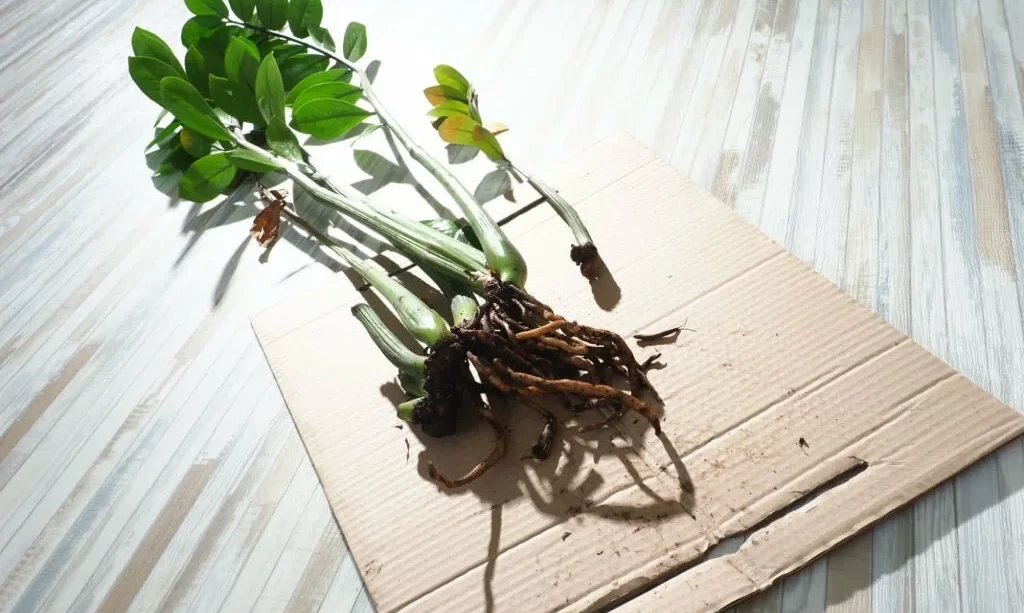The ZZ plant, scientifically known as Zamioculcas zamiifolia, is a beloved fixture in the world of indoor gardening. Its reputation as an easy-to-care-for and resilient houseplant has earned it a special place in many homes. But when it comes to the question of whether ZZ plants prefer to be root-bound, there’s a bit of intrigue. In this article, we will delve into the world of ZZ plants to uncover the secrets of their root preferences and how it impacts their overall well-being.
- ZZ Plant (Zamioculcas Zamiifolia)
- Glossy, dark green leaves
- Indirect sunlight
- Allow top inch of soil to dry
- Tolerates various temperatures and low humidity
What is a ZZ Plant?
To truly understand the relationship between ZZ plants and being root-bound, we first need to get to know our green companion. ZZ plants are strikingly attractive with their glossy, dark green leaves and architectural form. They are native to Eastern Africa and have adapted to thrive in low-light conditions, making them an ideal choice for those who might not have the brightest spot in their homes. Their ability to tolerate neglect and still flourish has made them a top pick for beginners and seasoned plant enthusiasts alike.
Root-Bound Plants
Before we explore the nuances of ZZ plants and their root preferences, let’s get familiar with the concept of root-bound plants. When a potted plant becomes root-bound, it means its roots have outgrown the available space in the container, often forming a dense mass. This can occur when a plant has been growing in the same pot for an extended period. Understanding this condition is crucial because it can impact the plant’s health, growth, and overall vitality. Now that we have these foundational concepts in place, let’s continue our journey into the world of ZZ plants and their root-bound tendencies.
- Best value, one bottle makes 50 gallons of nutrient rich, odorless fertilizer that feeds instantly
- Easy to use & feeds instantly. Just mix a cap full of Purived Plant Food to 1 gallon of water & feed
- All-purpose, nutrient rich formula designed to feed indoor & outdoor potted plants
- Formulated for all types of feeding methods: soil drench, foliar feed, full & semi hydroponics
ZZ Plant’s Root System
Now that we’ve met the ZZ plant and have a grasp of what it means for a plant to be root-bound, it’s time to delve into the unique root system of the ZZ plant. ZZ plants are naturally adapted to thrive in arid regions, and their root system reflects this adaptation. Their roots are thick, fleshy, and store water, which allows them to endure periods of drought. These roots tend to be compact and don’t spread out extensively, making them well-suited for container growth. ZZ plants prefer to keep their root system contained, which sets the stage for our exploration into their root-bound tendencies.
Signs of a Root-Bound ZZ Plant
As we journey deeper into understanding ZZ plants and their root-bound inclinations, it’s vital to recognize the telltale signs that your ZZ plant might be in need of a larger home. A root-bound ZZ plant may exhibit several noticeable symptoms. One of the most common signs is slowed growth. When the roots become densely packed in the pot, they have limited space for expansion, which can hinder the plant’s overall development. Additionally, the pot-bound roots might start to emerge from the drainage holes at the bottom of the pot, signaling that they are searching for more room.
Another sign to watch for is a visibly crowded root system. If you gently lift the ZZ plant from its pot and notice a dense tangle of roots circling around the root ball, this is a clear indicator of a root-bound plant. These circling roots can hinder the plant’s ability to absorb nutrients and water effectively. In extreme cases, you may even observe cracks in the pot due to the pressure exerted by the crowded roots.
The Benefits of ZZ Plants Being Root-Bound
While the idea of a root-bound plant might sound like a concern, ZZ plants actually benefit from being slightly root-bound in certain ways. This condition can provide added stability to the plant, preventing it from tipping over in its pot. Additionally, the limited space for root expansion can result in a smaller overall plant size, which is desirable for those with limited space.
Furthermore, root-bound ZZ plants tend to require less frequent watering. The compact root system is more efficient at holding onto water, reducing the risk of overwatering, which is a common issue with many indoor plants. However, it’s essential to strike a balance because excessive root binding can lead to issues, as discussed in the previous sections.
Repotting ZZ Plants
As responsible plant caregivers, we must keep a watchful eye on our ZZ plants and recognize when they need a little more breathing room. When the signs of being root-bound become apparent, it’s time to consider repotting. To ensure your ZZ plant continues to thrive, select a slightly larger pot with good drainage. Gently remove the plant from its current container, tease out some of the roots, and place it in its new home. Be sure to use well-draining potting mix, and water thoroughly after repotting to help the ZZ plant settle into its new space.
Section 7: Conclusion
In conclusion, ZZ plants, with their remarkable ability to adapt to various conditions, can tolerate being slightly root-bound. While this condition offers certain advantages such as stability, reduced watering frequency, and a compact size, it’s crucial to strike a balance. When your ZZ plant starts showing signs of being overly root-bound, it’s time to repot and provide it with the space it needs to continue thriving. By understanding the unique characteristics of ZZ plants and their root system, you can ensure that your green friend remains healthy and happy in its pot. So, keep an eye on those roots and enjoy the beauty of your ZZ plant in your indoor garden.





